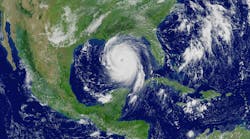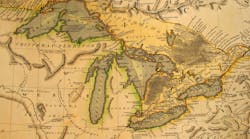An emerging topic in stormwater management programs is asset management (AM). The System of International Standards (ISO) defines an asset as an, “item, thing, or entity that has potential or actual value to an organization.” Millions of stormwater assets currently exist across the country, yet they are often not valued as an asset by the communities where these assets are located. The Water Environment Federation (WEF) MS4 Survey from 2020 found that only approximately half of MS4s have developed an asset management program. Due to the nascent nature of the stormwater sector, it is likely that these programs are less formalized and well developed compared with other, more mature infrastructure sectors. The relatively low amount of asset management currently in the stormwater sector does not reflect a lack of interest in this topic. To the contrary, the WEF 2020 survey findings identified asset management as the topic of the second highest need in terms of information and technical resources.
What is Asset Management?
Asset management is one of those terms that is familiar to many but is rarely understood in a deeper sense. The Southwest Environmental Finance Center refers to AM as “applied common sense (that is) designed to help people decide how and where to spend their money to achieve the desired results.” EPA notes that this desired result is lowest total cost of ownership, and that embracing AM represents a paradigm shift from simply “building and operating” to “managing assets.” This paradigm focuses on five areas:
Current inventory and state of assets
Desired level of service
Criticality of assets
Minimum life cycle costs
Long-term funding plan
In reviewing these AM areas, it is evident that for a stormwater program manager to develop an AM plan, they will have to have a clear understanding of the location and nature of all conveyance systems and treatment practices, define level of services for the program as well as analyze the criticality of inventoried assets (i.e., which elements with a high probability of failure will lead to major impacts), develop costs of maintenance vs. costs of replacement for assets, and craft a vision based upon all this information that maps out long-term investments for the program. This is asking a lot of programs in a sector that is chronically under-funded with less than one-third of programs have no local dedicated funding source. But AM is a common practice in many other infrastructure sectors, including the wastewater and the drinking water sectors. This needs to become the norm in the stormwater sector as well.
Why is Asset Management Important?
The process to set up an AM plan is well understood but can be daunting, especially for a less mature sector like stormwater. The sensible question may arise if the investment in resources is worth the potential benefits gained. One answer on this question is to look at other infrastructure sectors. Since AM planning is a norm for these more established sectors, it’s clear that the benefits are significant compared to the costs to set up an AM plan. But this does not address the value in the context of a stormwater program, specifically, so we should examine the inherent value of an AM value in this context and consider if the five AM areas highlighted can be beneficial for these programs. For instance, it is generally good practice – and often a permit requirement – to locate and inventory MS4 program elements. Developing an expectation of the performance of MS4 conveyance and treatment as well as an understanding of the risks associated with failures within the MS4 system has value in the effort to identify where and how to invest in your stormwater program regardless of AM principles. Efforts to estimate both capital and inspection/maintenance costs is key when considering ways to right-size investment efforts with project identification and development both in the short-term and in the long-term. Each AM area has value – but when performed in a deliberate and coordinated fashion, the outcome is greater than the sum of the parts. Specifically, an AM plan puts stormwater programs in a position to identify how best to invest in their programs, which is important information when investigating sources of funding – and it places these programs in the best position possible to receive funding. Considering the massive investment in federal dollars in water infrastructure – including stormwater – those programs best positioned to receive funds are likely to be at the front of the line.
From a macro-scale perspective, the more communities who perform AM planning, the more data is generated for state and national stormwater organizations to use in advocacy for increased state and federal funding of stormwater programs and infrastructure. So it is evident that AM planning has value at various scales in our sector.
Future of Asset Management for the Stormwater Sector?
Asset management is clearly on the rise in the stormwater sector, with the understanding that the exact pathway forward will depend upon the level of awareness and understanding of stormwater program managers on the value of these efforts. This forward momentum will also be tied to the amount of support from stakeholders and decision makers who are key players in these programs.
With the increase in technologies being used to locate and track stormwater assets through digital platforms, the ability for programs to address asset inventorying will become increasingly efficient. The challenge will be changing the view on whether stormwater infrastructure is an asset that needs to be treated as such. One data point on this front is the movement by the Government Accounting Standards Board (GASB) who released Statement 62 in 2010 that included a shift that allows “distributed infrastructure”, such as green infrastructure, to be recognized as a physical asset class in public infrastructure accounting. Earth Economics clarified in a 2018 report that this change could enable the bundling of hundreds of separate green infrastructure practices into a single asset. It is hoped that this GASB ruling can catalyze an increase in financing for green infrastructure and can highlight the value of identifying stormwater infrastructure as an asset for communities.
The value of stormwater infrastructure is increasingly being recognized, as reflected in the inclusion of stormwater as a new category in the 2021 ASCE Infrastructure Report Card. This recognition will continue to drive interest in viewing stormwater infrastructure as an asset, so our sector is poised to capitalize on this interest if we can embrace AM planning as a norm in stormwater programs across the country.






